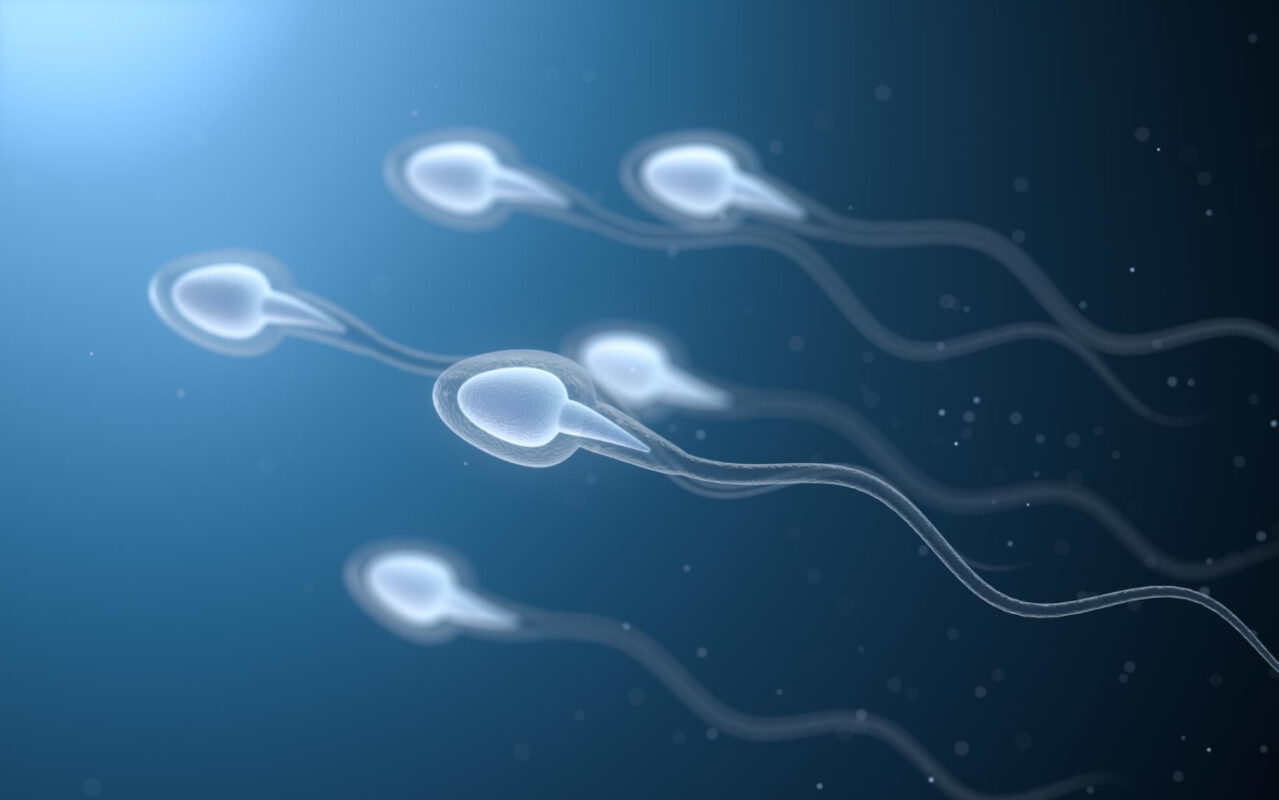Azoospermia is a medical condition that is diagnosed when no sperm are found in the semen sample, even after being processed in the laboratory using centrifugation techniques. This complete absence of sperm accounts for about 10 to 15% of the causes of male infertility, according to data from the European Urological Association and the American Society for Reproductive Medicine (ASRM).
Although male fertility is often talked about in terms of the number or motility of sperm, azoospermia goes further: it implies that, in principle, there are no male reproductive cells available to fertilize an egg. In most cases, this condition produces no visible symptoms, causing many men to discover it only when a fertility study, such as a spermogram, is performed.
Understanding this condition involves recognizing its possible causes, knowing how it is correctly diagnosed, and knowing what treatment options exist. Adequate information, based on medical evidence, allows timely and realistic decisions to be made in the face of a diagnosis of this type.
Types of azoospermia: obstructive and non-obstructive
From a clinical point of view, azoospermia is classified into two large groups: obstructive azoospermia and non-obstructive azoospermia, depending on the place where the process of sperm production or transport is interrupted.
In obstructive azoospermia, sperm are produced in the testicles, but they cannot leave due to an obstruction in the ducts responsible for transporting them. This obstruction can be due to previous infections, surgeries such as vasectomy, congenital alterations or traumatic injuries. In this type of azoospermia, testicular function may be preserved, which opens up the possibility of sperm retrieval through surgical procedures.
On the other hand, non-obstructive azoospermia is related to an alteration in the production of sperm within the testicle. It can be caused by genetic alterations, hormonal problems, diseases such as Klinefelter syndrome or testicular damage due to exposure to treatments such as chemotherapy. In these cases, the possibility of finding viable sperm will depend on the degree of testicular damage and whether there is any area in the testicles where sperm production is maintained, even if it is in very small quantities.
How to diagnose azoospermia: the role of the spermogram

The basic test to detect azoospermia is the spermogram, a laboratory test that allows the evaluation of semen volume, sperm concentration, motility and morphology. When the result indicates a total absence of sperm, it is recommended to repeat the analysis at least a second time, at a prudent interval, to confirm the diagnosis.
In addition to the spermogram, your doctor may order hormone testing (such as FSH, LH, and testosterone), genetic testing, testicular ultrasound, and, in some cases, a testicular biopsy. This set of tests makes it possible to differentiate between an obstructive or non-obstructive cause, which is key to defining therapeutic possibilities.
Testicular biopsy, for example, not only helps identify the type of azoospermia, but can also allow direct retrieval of sperm if sperm are present in any part of the testicular tissue. This technique is used, among other things, for its eventual use in assisted reproduction treatments.
What options are there to achieve pregnancy?
The options available for achieving pregnancy will depend directly on the type of azoospermia, the man’s overall health, and the findings obtained during the diagnostic process. In obstructive cases, sperm retrieval techniques, such as TESA (testicular sperm aspiration) or microsurgical extraction (MESA or micro-TESE), offer encouraging success rates. The recovered sperm can be used for in vitro fertilization (IVF) with intracytoplasmic injection (ICSI), which involves introducing a single sperm into the egg.
In non-obstructive cases, the approach may be more complex. If sperm can be recovered by testicular biopsy, IVF-ICSI can also be chosen. However, if there is no presence of viable sperm, an available alternative is the use of donor sperm, a decision that must be made with medical, emotional and psychological support.
It is essential to understand that, beyond the technical procedure, these decisions usually involve a significant emotional burden for the couple. Therefore, the comprehensive accompaniment of specialists in fertility, psychology and genetics can be decisive to go through the process with greater clarity and serenity.
Remember that receiving a diagnosis of azoospermia can lead to multiple questions and emotions. Having clear information, a well-founded diagnosis and a medical team that listens, guides and accompanies makes a difference in the process. At Fertivida, we have an interdisciplinary team specialized in reproductive health that guides each person based on scientific evidence, clinical experience, and human warmth. Because the first step to making informed decisions is to have a good understanding of what’s going on.





